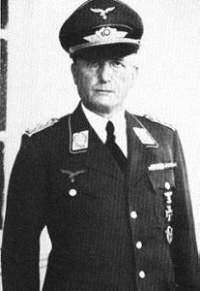 W
WThe 22 July 1943 Athens protest was a massive protest that took place in Athens, Axis-occupied Greece on July 22, 1943 against the German plans to expand the Bulgarian occupation zone in Greek Macedonia.
 W
WThe 41st Infantry Division, formerly the 41st Fortress Division, was a German Army infantry division in World War II. It was employed on occupation duties in southern Greece, and surrendered to the Yugoslav partisans at the end of the war.
 W
W117th Jäger Division was a German infantry division of World War II. The division was formed in April 1943 by the reorganization and redesignation of the 717th Infantry Division. The 717th Division had been formed in April 1941. It was transferred to Yugoslavia in May 1941, to conduct anti partisan and Internal security operations.
 W
WThe massacre of the Acqui Division, also known as the Cephalonia massacre, was the mass execution of the men of the Italian 33rd Infantry Division Acqui by the Germans on the island of Cephalonia, Greece, in September 1943, following the Italian armistice during the Second World War. About 5,000 soldiers were massacred and others drowned.
 W
WGünther Altenburg was a German diplomat.
 W
WAlexander Andrae, whose first name is often mistakenly given as Waldemar, was a German military officer from Kösling, Upper Silesia. Initially pursuing an Army career, he then joined the security police and eventually the Luftwaffe.
 W
WWalter Blume was a mid-ranking SS commander and leader of Sonderkommando 7a, part of the extermination commando group Einsatzgruppe B. The unit perpetrated the killings of thousands of Jews in Belarus and Russia. Blume was responsible for the deportation of over 46,000 Greek Jews to Auschwitz. Although imprisoned in 1945 and sentenced to death for war crimes in 1948, his sentence was commuted to life imprisonment in 1951 by the "Peck Panel" and he was released in 1955.
 W
WBruno Bräuer was a general in the paratroop forces of Nazi Germany during World War II. He served as a commander on Crete and then commanded the 9th Paratroop Division. After the war, Bräuer was convicted of war crimes and executed, along with Friedrich-Wilhelm Müller, on the anniversary of the German invasion of Crete.
 W
WFortress Crete was the term used during World War II by the German occupation forces to refer to the garrison and fortification of Crete.
 W
WThe Haidari concentration camp was a concentration camp operated by the German Schutzstaffel at the Athens suburb of Haidari during the Axis occupation of Greece in World War II. Operating from September 1943 until it was shut down in September 1944, it was the largest and most notorious concentration camp in wartime Greece, becoming known as the "Bastille of Greece".
 W
WThe Massacre of Kos was a war crime perpetrated in early October 1943 by the Wehrmacht against Italian army PoWs on the Dodecanese island of Kos, then under Italian occupation. About a hundred Italian officers were shot on the commands of General Friedrich-Wilhelm Müller, after being considered traitors for resisting the German invasion of the island.
 W
WKarl Hubert Lanz was a German general during the Second World War, in which he led units in the Eastern Front and in the Balkans. After the war, he was tried for war crimes and convicted in the Southeast Case, specifically for several atrocities committed by units under his command in the Balkans. Released in 1951, he joined the liberal Free Democratic Party and served as its adviser on military and security issues.
 W
WHartwig von Ludwiger was a German general in the Wehrmacht of Nazi Germany during World War II. Ludwiger was responsible for numerous atrocities committed throughout the Balkans. After the war, he was charged with war crimes in Yugoslavia, convicted, and executed.
 W
WFriedrich-Wilhelm Müller was a general in the Wehrmacht of Nazi Germany during World War II. He led an infantry regiment in the early stages of the war and by 1943 was commander of the 22nd Air Landing Division. Under his orders, troops of the division committed atrocities against Greek civilians. He was later commander of occupied Crete and his harsh methods of controlling the island saw him nicknamed "The Butcher of Crete." After the war he was convicted and executed by a Greek court for war crimes.
 W
WWalter Schimana was an Austrian functionary in the German SS during the Nazi era. He was SS and Police Leader in the occupied Soviet Union in 1942 and Higher SS and Police Leader in occupied Greece from October 1943. Responsible for numerous war crimes and atrocities in the occupied territories, Schimana was arrested by the Allies after the war and committed suicide while awaiting trial.
 W
WJürgen Stroop was a German SS commander during the Nazi era, who served as SS and Police Leader in occupied Poland. He led the suppression of the Warsaw Ghetto Uprising in 1943 and wrote the Stroop Report, a book-length account of the operation. Following the defeat of Germany, Stroop was prosecuted during the Dachau Trials and convicted of murdering nine US prisoners of war. After his extradition to Poland, Stroop was tried, convicted, and executed for crimes against humanity.
 W
W